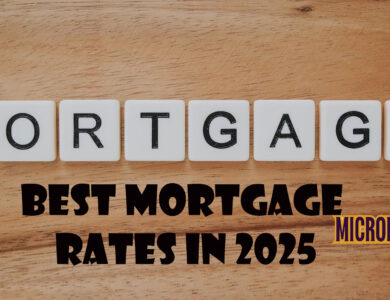
Hey everyone! Have you ever thought about how budgeting apps can change the way you handle your finances? It’s pretty interesting to find out that 70% of Americans who keep tabs on their spending often feel anxious about it. That’s why picking the right app is so important.
After diving into numerous options (Forbes Advisor took a look at 38 different apps), I’ve put together a handy guide featuring the 17 best budgeting apps for 2025. These apps do way more than track what comes in and goes out. They’re great at helping you set savings goals, keep an eye on your credit score, and even track your net worth!
With Mint set to close in March 2024, many are on the hunt for alternatives that don’t compromise on functionality or value. Whether you prefer a hands-on approach like YNAB, which includes a loan payoff simulator, or something more collaborative, like Honeydue for couples managing their finances together, our list has something for everyone, including free and paid options tailored to all kinds of financial needs. I’ve taken the time to test each app based on features, usability, cost, and security to help you discover your ideal budgeting companion. Happy budgeting!
Monarch Money is becoming a go-to financial hub for many, allowing you to see all your accounts in one easy-to-understand place. In light of Mint’s recent shutdown, it’s no wonder Reddit users have quickly embraced this app as a solid alternative.
-
Monarch Money key features
Monarch connects with over 13,000 financial institutions to provide you with a comprehensive financial dashboard that puts everything in one place. It smartly identifies your recurring subscriptions and bills, organizing them in a simple calendar. Plus, you’ll get reminders three days before any payments are due—no more surprise charges!
When it comes to budgeting, Monarch has you covered with two approaches. You can go with Flex Budgeting for those variable expenses or stick to the more traditional Category Budgeting if that suits your style. The investment tracker is especially handy, letting you keep an eye on your portfolio’s performance across all accounts, even including your cryptocurrency investments from Coinbase.
One of the best features of Monarch is its collaboration capability, which means you can share unlimited accounts with your partner or financial advisor without incurring any extra fees. The app even tracks real estate values using Zillow and helps you check your vehicle’s worth through a VIN lookup. It’s like having your financial world organized and accessible all at once!
-
Monarch Money pros and cons
Pros:
YOURBest Budgeting Apps of 2025 TEXT
Best budgeting apps for 2025: Monzo, Plum and more
Comprehensive financial management, including budgeting, investments, and goal tracking
Clean, user-friendly interface across web, iOS, and Android
Customizable budgeting categories
Superior transaction rules for automatic categorization
No advertisements or data selling
Cons:
- No free version available
Short 7-day trial period
Higher price point compared to some competitors
Occasional syncing issues with multiple accounts from the same bank
Monarch Money pricing
Monarch offers a 7-day free trial followed by a subscription of $14.99 monthly or $99.99 annually. Currently, new users can get 50% off their first year with code MONARCHVIP. Unlike many free budgeting apps, Monarch’s subscription model ensures it never sells user data or displays advertisements.
-
Monarch Money is best for
Monarch Money is ideal for individuals seeking a holistic approach to financial management. The app particularly excels for couples managing joint finances, with shared goal tracking and monthly reports. Moreover, Monarch works well for those who value data visualization, offering customizable charts that reveal spending patterns, income trends, and net worth changes over time. The platform suits users transitioning from Mint who want improved reliability and enhanced features.
-
You Need a Budget (YNAB)
YNAB, which stands for You Need a Budget, is a budgeting tool designed to help you take control of your finances. Its zero-based budgeting method ensures that every dollar you earn has a specific purpose, making your financial planning proactive rather than merely reactive.
Key Features of YNAB
YNAB is built around four essential rules that guide your budgeting journey. You can track your income and expenses automatically or manually, whichever suits your style. Plus, it allows you to set up custom categories and goals tailored to your financial aspirations, and even helps you calculate loan payments. If you’re looking to collaborate financially, YNAB Together lets you share your budget with up to six people, making it easier to manage shared expenses.
While YNAB doesn’t include investment tracking, it truly shines in the budgeting realm. With a wealth of educational resources available, including workshops and community support, you’ll feel empowered to make informed financial decisions.
YNAB pros and cons
Pros:
Teaches a proven money management philosophy
Extended 34-day free trial
Account sharing with up to six people
No data selling or advertisements
Strong security features, including encrypted data
Cons:
Steeper learning curve than other apps
Higher price point ($109/year)
Requires regular attention and maintenance
Limited reporting capabilities (only three reports)
No automatic subscription management
YNAB pricing
YNAB costs $14.99 monthly or $109 annually (as of August 1, 2024). New users receive a 34-day free trial without requiring credit card information. College students can apply for a free 12-month subscription by providing proof of enrollment.
YNAB best for
YNAB works exceptionally well for individuals committed to financial improvement who don’t mind spending time managing their budget. The app particularly benefits those with irregular incomes, like gig workers or freelancers. According to company research, the average user saves $600 in their first two months and $6,000 in their first year.
YNAB is ideal for those wanting to break the paycheck-to-paycheck cycle through its “age your money” principle, which helps users eventually spend this month’s bills with last month’s income. Additionally, couples seeking better financial communication find YNAB’s collaborative features valuable for joint money management.
-
Goodbudget
Goodbudget brings the classic envelope budgeting method into the digital age, offering a hands-on approach to money management. With over 3 million downloads and high user ratings across platforms, this app puts a modern twist on traditional cash envelope budgeting without requiring physical envelopes.
-
Goodbudget key features
Goodbudget’s core functionality revolves around digital “envelopes” for different spending categories. Users manually input their income and expenses, allocating funds to envelopes for groceries, gas, entertainment, and more. The app visually represents each envelope’s balance with color-coded bars—green indicates money remaining, while red shows overspending.
Unlike many competitors, Goodbudget doesn’t automatically sync with bank accounts in its free version. Instead, it encourages hands-on budget management. The app offers helpful reports that analyze spending patterns and track income versus expenses. Users can also access budgets across multiple devices and share finances with partners, making household budgeting more collaborative.
Additionally, Goodbudget provides educational resources, including courses on breaking the paycheck-to-paycheck cycle and forums where users can connect with the community.
- Goodbudget pros and cons
Pros:
Simple, intuitive interface
Free version available
Budget sharing across devices
No need to connect sensitive banking information
Customizable envelope categories
Educational resources and community support
Cons:
Manual transaction entry required
Limited features in the free version
No investment tracking tools
Higher maintenance than auto-syncing apps
Premium required for multiple financial accounts
Goodbudget pricing
- Goodbudget offers two tiers:
Free: $0 with 20 total envelopes (10 regular, 10 annual/goal), 1 account, 2 devices, 1 year of history, and community support
Premium: $10 monthly or $80 annually with automatic bank sync (US banks only), unlimited envelopes, unlimited accounts, 5 devices, 7 years of history, and email support
The company offers a 30-day refund policy for new subscribers.
- Goodbudget best for
Goodbudget is ideal for users who prefer a hands-on approach to budgeting. The app particularly shines for couples managing finances together, as noted by users who call it a “relationship saver” for synced budget tracking. First-time budgeters appreciate its simplicity, while those uncomfortable sharing banking credentials value its manual entry system.
Many users report feeling more in control of their spending after adopting Goodbudget’s envelope method, with some noting substantial changes in spending habits within the first month of use.
-
PocketGuard

PocketGuard focuses on answering one critical question: “How much can I safely spend today?” With over a million members, this budgeting app stands apart through its “In My Pocket” feature that clearly shows spending money available after accounting for bills, goals, and necessities.
Also Read On:
Proven Money Saving Tips That Work in 2025
-
PocketGuard key features
At PocketGuard’s core is the “Leftover” calculation, prominently displayed on your dashboard to show remaining funds after monthly expenses. The app connects to over 18,000 banks through secure partners like Finicity, Plaid, and Apple Wallet.
Beyond basic tracking, PocketGuard automatically identifies recurring bills and subscriptions, organizing them in a calendar format. The debt payoff tool helps create payment strategies, calculates interest costs, and tracks progress. Additionally, the app offers bill negotiation services that attempt to lower your recurring expenses, though they take 40% of any savings secured.
For security, PocketGuard employs 256-bit SSL encryption and requires a unique PIN plus optional biometric authentication. The app also includes a 20-minute self-guided financial education tutorial covering budgeting approaches, debt management, and goal setting.
- PocketGuard pros and cons
- Pros:
Also Read On:
How I Saved My First $1,000 on a Small Income
- Clearly shows available spending money
- Strong security features with PIN and biometric authentication
- Bill negotiation services
- Basic personal finance education
- Multiple data providers for reliable bank connectivity
Cons:
- The free version is severely limited (only two budget categories)
- Short 7-day free trial
- No subscription cancellation service (only provides instructions)
- Manual categorization is often required for transactions
- Privacy policy includes marketing partner offers despite “no data selling” claims
- PocketGuard pricing
-
PocketGuard offers multiple pricing options:
- Free version: Basic features with significant limitations
- Plus monthly: $12.99/month
- Plus annually: $74.99/year
- Lifetime membership: $149.99 (occasionally discounted to $79.99)
-
PocketGuard best for
PocketGuard excels for individuals struggling with overspending. The “In My Pocket” feature benefits those who need clear spending limits. Furthermore, users juggling multiple credit card balances will appreciate the debt payoff planning tools. The app works well for visual learners, offering pie charts that provide excellent expense breakdowns. Finally, PocketGuard suits those prioritizing security, with its additional authentication layers beyond typical banking apps.
- Empower Personal Dashboard

Originally known as Personal Capital, Empower shifts the focus from day-to-day budgeting to comprehensive wealth management and investment tracking. With its robust free dashboard, this app caters to users looking beyond basic expense categorization.
-
Empower key features
Empower’s dashboard provides a holistic view of your finances with several standout tools. Its net worth tracker shows all your accounts in one place, including investments, savings, and debts. The cash flow graph displays money moving in and out, comparing current spending with previous months.
For investors, Empower truly shines. The investment checkup tool analyzes your portfolio’s future growth using Morningstar’s long-term forecasts rather than historical averages. Subsequently, the retirement planner runs your finances through various scenarios (even simulating recessions) to determine if you’re on track to retire when planned.
Additionally, the dashboard includes a fee analyzer that identifies excessive investment fees in your retirement accounts. The savings planner helps you set emergency fund targets with visual bar graphs showing progress.
-
Empower pros and cons.
Pros:
Free comprehensive financial dashboard
Excellent investment tracking and retirement planning tools
Multiple security layers, including encryption and fraud protection
Strong portfolio visualization and analysis
Net worth monitoring across all accounts
Cons:
Limited budgeting functionality compared to dedicated apps
Investment management services come with fees
Occasional account connection reliability issues
Mobile app offers fewer features than the desktop version
More focused on investing than day-to-day budget management
-
Empower pricing
The Empower Personal Dashboard is completely free to use. However, if you want personalized investment services and wealth management advice from licensed fiduciary advisors, fees start at 0.89% annually for assets over $100,000. These fees decrease to 0.79%-0.49% for accounts over $1 million.
-
Empower best for
Empower works best for users who’ve accumulated multiple investment accounts and want to see their entire financial picture. In essence, it’s ideal for those focusing on long-term wealth building rather than strict monthly budgeting. The app particularly benefits investors seeking portfolio analysis, retirement planning guidance, and fee transparency. If you’re primarily concerned with tracking net worth and investment performance alongside basic budgeting, Empower offers an impressive suite of free tools.
-
Honeydue
Honeydue is crafted with couples in mind, making it unique compared to regular budgeting apps. It emphasizes working together and being open about finances, helping partners navigate their money matters collaboratively.
-
Honeydue key features
Honeydue makes managing finances a breeze by connecting with over 20,000 financial institutions in five different countries. This means that partners can easily link their checking accounts, credit cards, loans, and investments all in one spot. A standout feature is how the app puts you in the driver’s seat when it comes to sharing your financial information. Partners have the flexibility to decide if they want to share both balances and transactions, just the balances, or keep certain accounts completely private.
To help couples stay on top of their finances, the app includes a bill tracking system that sends out reminders when payments are coming due. This feature ensures that both partners are in sync when it comes to their financial obligations. Plus, the built-in chat allows for easy communication about specific transactions, so discussing finances can feel more relaxed and straightforward, whether it’s just sharing a thought or adding an emoji to lighten the mood!
Honeydue goes beyond simple tracking, too. Users can customize how their spending is categorized, tailoring it to fit their unique needs. And for couples looking for a joint banking solution, there’s even an option through Sutton Bank with no monthly fees, free ATM access, and the added security of FDIC insurance. It’s a handy tool for managing your shared financial life together!
-
Honeydue pros and cons
- Pros:
Completely free with no premium tier
Customizable privacy controls for shared accounts
Built-in messaging system for transaction discussions
Bill payment reminders with partner coordination
Strong security with 256-bit encryption and multi-factor authentication
- Cons:
Mobile-only platform with no desktop version
Limited advanced budgeting tools compared to competitors
Occasional syncing issues with certain banks
No investment tracking capabilities
Some users report difficulties obtaining account statements
Honeydue pricing
Honeydue is entirely free to use with no premium subscription option. The company generates revenue through optional “tips” ranging from $1 to $10 monthly that users can provide if they enjoy the service. Consequently, there are no feature limitations or paywalls within the app.
- Honeydue best for
Honeydue excels for couples at any relationship stage who want to manage finances collaboratively without completely merging accounts. The app works exceptionally well for partners with different spending habits who need to improve financial communication. First-time couples moving in together find particular value in Honeydue’s ability to split expenses and track shared bills. Regardless of relationship duration, from newly committed partners to those celebrating decades together, Honeydue provides tools to reduce money-related stress and improve financial transparency



